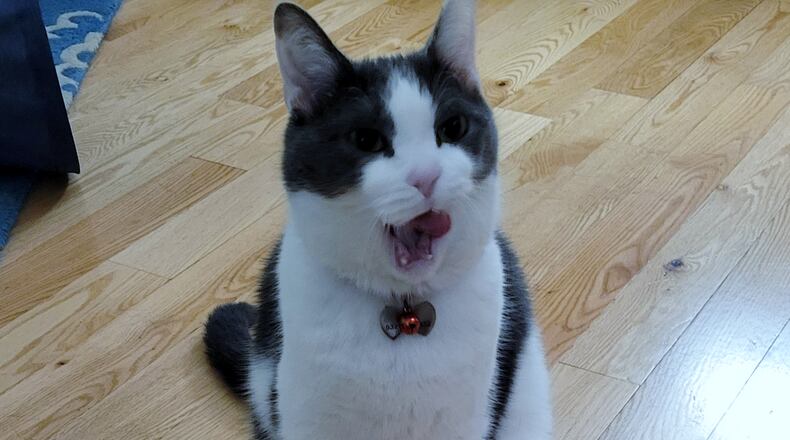“What?” I responded. “Who emailed you that?”
“No,” Ed said, “it was on that website with the dog and cat pics.”
In this family, cute dog and cat pics always trump work emails.
Turns out Ed was on to something, but it’s not unique to cats. Dogs and other animals are equipped with this special organ and use it in similar fashion.
It’s called Jacobson’s Organ, named after the Danish physician and naturalist Ludwig Levin Jacobson, who discovered it in 1811. Located in the roof of the mouth, it holds two ducts and, according to myanimals.com, functions as a scent analyzer.
We’ve seen our 3-year-old cat Pip using his Jacobson’s on numerous occasions without realizing what he was doing.
The extra organ allows him to taste scents carried through the air and to smell what Ed and I can’t – though in fairness to Ed, he was hit a few times in the nose as an amateur boxer and his “sniffer” isn’t the best.
A food-motivated creature, Pip uses his Jacobson’s when he comes across a scent in need of further investigation. Often, it is the smells of food being prepared for dinner, no matter if it’s his or ours. I will be in the pantry looking over a recipe and grabbing ingredients when, out of nowhere, Pip, the self-proclaimed sous chef, is assisting me.
Our previous cat, Abby, would be by my side in seconds nudging me for her share of a can of tuna fish I was opening. It didn’t matter where she was in the house. She never did that with any other can of food I opened.
Cats also use their Jacobson’s Organ for hunting, social interaction, sex and self-defense.
Some research suggests humans have this organ, but if we do, the jury is out as to whether we use it. In general, for most animals, smell is a dominant sense. We rely on sight more than the other senses.
But we know Pip uses it. It all makes sense now.
When the sassy tuxedo comes upon a scent he wants to know more about, he curls his upper lip and exposes his teeth as he transfers the scent into his mouth. Once inside, his breathing passageways close for just a second as he flicks the scent upwards to the Jacobson’s Organ. Experts define this “look” as the flehmen reaction.
These cat experts say when a cat is using the organ his facial expression resembles a grimace, or as many cat owners call it, a “stink face.” It’s certainly a different facial expression from the many others Pip usually displays.
Besides food, Pip’s “stink face” appears when I change up perfumes. I’ve worn Gucci’s Flora for years. I’ll change it up with a spray or two of Burberry, and Pip smells the difference.
Not sure what he thinks of it, but he can smell it better than Ed.
Karin Spicer is a member of The Dog Writers Association of America. She lives with her family and two furry pets who inspire her. She can be reached at spicerkarin@gmail.com.
SIMILARITIES OF CAT AND HUMAN ANATOMY
1. Four-chambered heart
2. Respiratory systems
3. Excretory system.
About the Author
